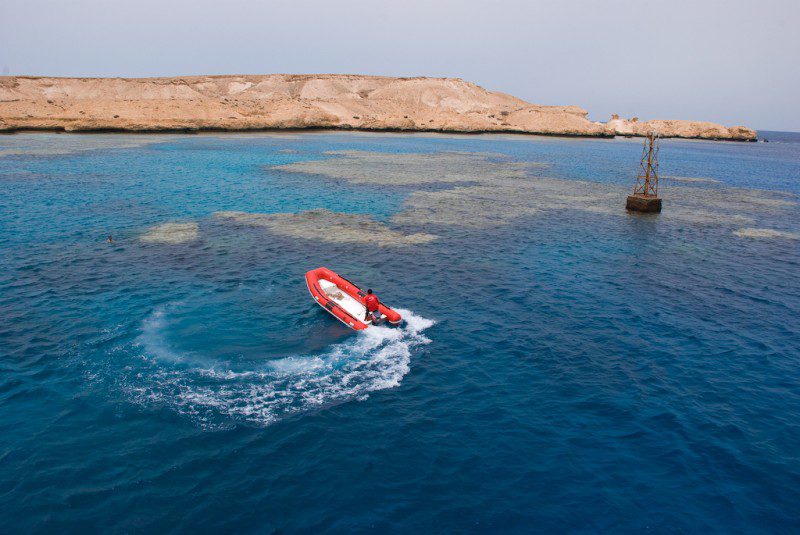The Middle East has the third largest quantity of desalinated water globally, but it’s also the region where desalination is used most intensively. With freshwater reserves rapidly depleting, and climate change creating drier conditions in some areas, desalination is set to play an even greater role in the future. This article explores the current state of Desalination in the Middle East and its potential for growth in the coming years.
What is Desalination?
Desalination is the process of removing salt from water. It is used to produce drinking water from seawater and other brackish water sources. It is also used for industrial processes such as making saline water for power plants, desalination of oil and gas or desalination of petrochemicals. There are various methods of desalination, but the most common are Multi-stage Flash (MSF), Reverse Osmosis (RO), and Thermal distillation. The first two processes involve removing salt by pushing the water through a membrane, while the second uses evaporation to remove salt from water.
Why is Desalination So Important in the Middle East?
The Middle East is one of the driest regions in the world and the majority of its countries rely on desalination to meet their water needs. The region’s rapid population growth and increasing demand for water have put pressure on the availability of water. This has led to the adoption of desalination technologies as a source of fresh water. Among the Gulf countries, the UAE has the largest desalination capacity globally, followed by Saudi Arabia and Qatar. The UAE relies on desalination for more than 50% of its total freshwater supply, while Saudi Arabia uses desalination to meet over 80% of its growing water needs. Qatar has been heavily investing in desalination projects due to low rainfall and declining groundwater availability. In Oman, desalination represents only a small percentage of the country’s total water supply. Kuwait and Bahrain are expected to significantly increase their desalination capacity in the coming years. The situation is slightly different in non-Gulf countries, where the share of desalination in total water demand varies between 5% and 25%. The most notable examples are Jordan and Israel, where desalination represents around 60% and 70% of the total water supply respectively. Other important desalination countries in the region include Iran, Iraq and Syria.
Which Countries Have the Most Desalination Plants?
The Middle East countries with the largest number of desalination plants are Saudi Arabia (1,330), the UAE (585), Kuwait (364), Qatar (363), Oman (357), Bahrain (247) and Iran (210). The majority of desalination plants are located along the western coast of Saudi Arabia and the southern coast of the UAE, where the average seawater desalination temperature is higher. In Saudi Arabia and the UAE, the majority of the desalination plants have been built along the coast of the Persian Gulf. In Kuwait, the majority of the desalination plants are concentrated along the coast of the Gulf of Kuwait. In Qatar, the majority of the desalination plants are located around the northwestern coast of the country, while in Oman and Bahrain, the majority of the desalination plants are built along the coast of the Gulf of Oman and the Arabian Sea respectively.
Limitations of Desalination
One of the main issues associated with desalination is the high cost and energy consumption. The process requires a substantial investment in the facility itself, along with the energy required for distillation. Energy costs are expected to significantly rise over the next decade due to the adoption of renewable energy sources, which will increase the cost of desalination. Another limitation associated with desalination is the high quantity of greenhouse gas emissions. CO2 emissions associated with desalination are estimated to be around 1.5 times higher than energy production from fossil fuels. Furthermore, desalination results in higher levels of CO2 emissions per unit of water produced than other water sources. A third limitation associated with desalination is the high brine production. Brine is a highly concentrated saline solution that contains various salts. Due to its high concentration, the brine should be disposed of safely, which can prove to be challenging. Brine can be used in a variety of ways such as in agriculture and road de-icing. It can also be desalted to produce industrial water.
Future Growth of Desalination in the Middle East
Desalination is expected to play an even greater role in the Middle East in the coming years. The region is experiencing rapid population growth and increasing demand for water. Fresh water reserves are forecast to decline in many countries due to declining rainfall, rising temperatures and more frequent droughts. These factors are expected to increase the region’s reliance on desalination as a source of water. The region will likely see an increase in the number of desalination plants and the use of new technologies such as hybrid desalination plants. These plants use both desalination and other sources of water such as groundwater. They are expected to become more common due to increasing groundwater levels across the region. In the future, desalination will play an even greater role in the Middle East, particularly in Saudi Arabia, the UAE and Qatar. Other countries in the region may significantly increase their desalination capacity in the future.



















